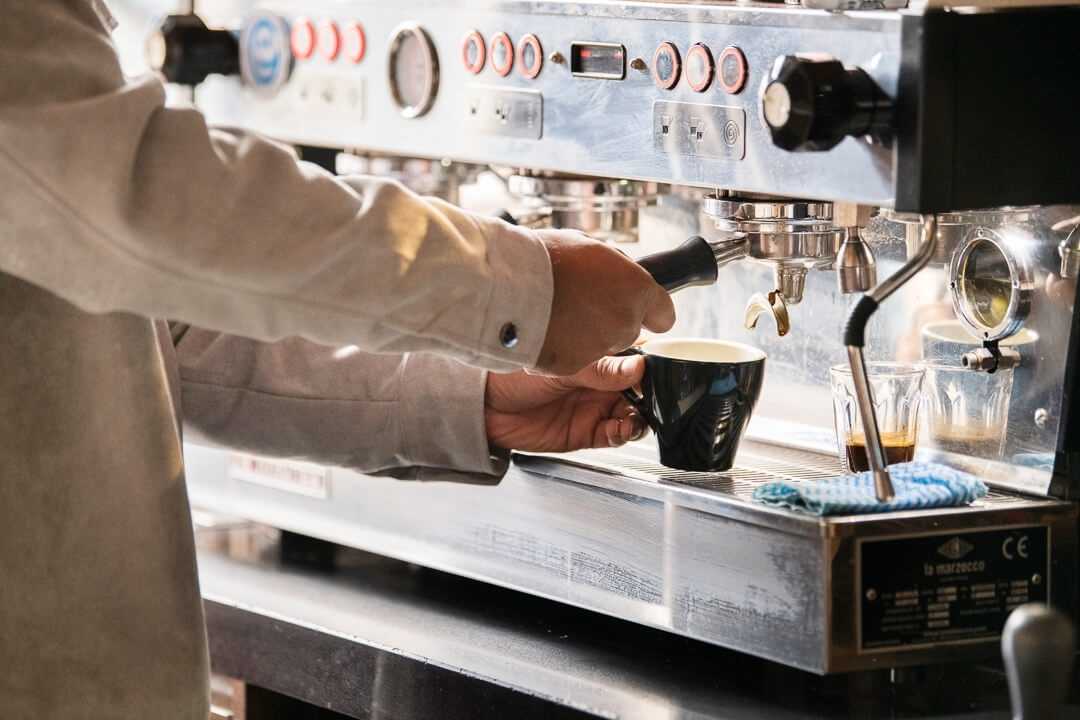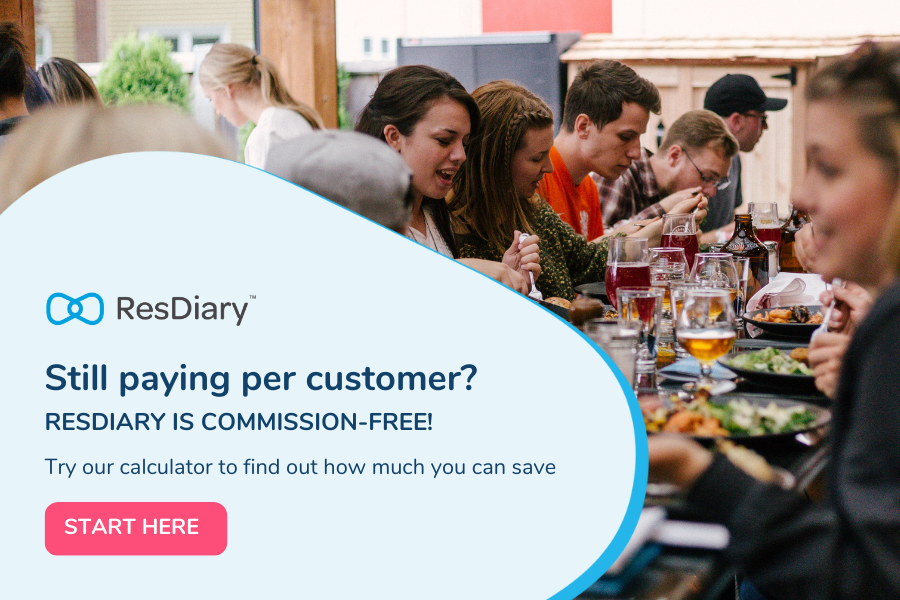Whether you own a global franchise, fine dining or independent restaurant, the restaurant industry is increasingly becoming oversaturated. This makes it difficult for both new and existing restaurants to retain their competitive edge.
Due to the fact that trends and customer tastes are constantly changing, it is important to make sure business owners are regularly monitoring customer satisfaction and market demand. Looking for shifts in customer preferences and understanding how your restaurant sales and yield are affected by these changes will help your business stay competitive.
At ResDiary, we understand how difficult it can be to keep up with the current trends and demands in the hospitality industry. Here are our top quick tips for adapting and keeping up with the crowd:
Define and understand the target market
For your restaurant to thrive, it is vital that you know your customer. This will enable you to effectively create a marketing plan for your restaurant to target your ideal crowd and bring them in. Before setting up a marketing plan, a great way to work out your current customer persona is to ask yourself the following questions:
"What is the best way to communicate/ reach them?"
Communication is integral to reaching and appealing to your audience. Making sure that your chosen communication, whether it’s through EDM, social media or even signage in your restaurant utilises simple language that informs and entices. Using puns or food related jokes on daily special signs or in a social media caption is a great way to show off the entertaining aspect of your restaurant and highlight it as an enjoyable experience.
"What factors do your customers consider when choosing what restaurant to eat at?"
Considering your target market thought process is also a great way to define what kind of marketing strategy you can take. This can be done by checking out online reviews and other local businesses pricing and service. Looking to the local area will allow you to narrow down your target audience, while still considering the competition that you will be up against.
Create a customer persona
Creating a customer persona is recommended as it will help you in defining your target market and creating an effective marketing strategy.
A customer persona is a short list of ideal guest characteristics which are based on both your financial and overall business goals. If your restaurant falls into a higher price category, then your customer persona should reflect that, with characteristics of luxury and desire for fine dining.
Identify your business' strengths and weaknesses
One effective way in which you can identify your restaurant's strengths and weaknesses is by carrying out a SWOT analysis:
S: Strengths
Identifying strengths is a great way to begin analysing your current business situation. Not only are strengths a great motivator for owners and employees, but spending time further developing strengths will push your business success skyward.
Your restaurant strengths could cover a number of attributes, including:
-
competitive pricing
-
fine dining experience
-
unique dishes
-
using local ingredients or produce
-
sustainable food and waste management
-
Immaculate customer service
W: Weaknesses
It is important to understand your business from all angles, including any weaknesses that you may have. Whether it’s a limitation on space or even a similarity in cuisine to a nearby restaurant, working out what your business could improve on is a great way to tackle market competition. A great way to quickly identify a business weakness is by monitoring customer complaints and online reviews.
O: Opportunities
The third step of a SWOT analysis is to take any weaknesses and turn them into opportunities. If your restaurant is in need of a stand out or refresh, taking the opportunity to make weakness a strength is definitely the best way to do it!
T: Threats
The final part of this analysis is to identify any threats to your current yield. The notion of a ‘threat’ is basically taking the current competition into account. Your competition can include nearby restaurants and hospitality venues, restaurants with similar cuisine or experience and even larger establishments within your local area.
Doing a SWOT analysis on your restaurant will allow you to thoroughly assess both internal (strengths and weaknesses) and external factors (opportunities and threats) to make meaningful changes.
This will give you further, outsider insight on what your target market has to say about your restaurants, allowing you to easily identify weaknesses, and from there make necessary changes to solve such issues whilst mitigating the frequency of customers leaving related complaints.
Define your USP. How can you sell it?
Defining your unique selling proposition (USP) will allow you to differentiate your restaurant amongst other restaurants.
A good question you may want to ask yourself to help identify your USP is: "What makes your restaurant different from other restaurants?"
The USP of your restaurant can be anything, such as having a reputable chef, inclusive dietary menu, easy to access location or even a trendy and Instagram friendly interior design. Whatever it may be, it is important that you have identified your target audience prior to this, as you will need to differentiate your restaurant around something they care about.
Ensure your USP is not only just what your restaurant's competitive advantage, but also what your target market wants.
Thoroughly analyse the market
To remain competitive in the restaurant industry, you need to know your competitors well. This can be done a number of ways, including checking online reviews and customer experiences that have occurred in competitor venues.
Alternative options for analysing the market could be visiting the restaurant yourself or subscribing to their email subscription. Although getting insider knowledge of your competitors may seem sneaky, understanding how other businesses function and present their experience is extremely valuable to keeping up with market demand.
Why should I perform a restaurant competitor analysis?
A competitive analysis is when you investigate and analyse your competition in order to have a thorough understanding and idea of the market and how your restaurant is doing compared to competitors. There are two different types of competitors that can be analysed for valuable information:
Direct competitors
Direct competitors would be restaurants that are very similar to yours. For example, let's say you own a Japanese fast food restaurant with a target audience of young adults and 9-5 corporate workers due to the convenience and affordable price range. If there is another Japanese fast food restaurant with the same target market and also in a close proximity, they would be considered a direct competitor.
Indirect competitors
Indirect restaurant competition is a bit more difficult to distinguish as they can sell a different cuisine, but they would still be considered an indirect competitor due to having the same target market. Let's take the same Japanese fast food example, if there is a Chinese fast food restaurant near you, they would be considered an indirect competitor because they also would have the same target audience of young adults and 9-5 corporate workers.
Creating a competitor analysis may seem very overwhelming but it will help identify competitors weaknesses and strengths.
Study your menu and competitors' menu
The main determining factor for which restaurant is preferable to customers can depend greatly on the menu. Factors like having poor pricing or even poor graphic design can make or break the overall customer experience.
Due to this, it is extremely beneficial to study your competitors' menu to see what they offer and also what you are competing against. Some things to look for include:
Pricing: What is the price range of their dishes? Is it competitive with my prices? Competitive pricing will help your restaurant attract customers.
Customer favourites: What are the popular dishes from this restaurant? Is there a trend?
Dietary requirements: Does this restaurant cater towards those with dietary requirements? Is this something I should also do for my business?
Further, in this digital age, it is crucial that as a business owner, you make your restaurant's menu available online. In fact, research shows that 49% of customers perform online menu searchers during the process of deciding on a restaurant.
By making your menu available online, you are essentially exposing your restaurant to a larger pool of customers. For example, if you own an Italian restaurant, you would want your restaurant's menu to show up as a result when the user is searching up Italian restaurants near me on Google. In some situations, customers may be searching for a certain food (eg. carbonara pasta).
Consider your location
Choosing the right location for a restaurant is an important factor to consider when trying to optimise your competitiveness. A common misconception when settling down on a location is focusing too much on choosing an area with little to no neighbouring competitors. In some situations, saturated areas with other high demand competitors can be beneficial for your business as this guarantees good exposure and foot traffic.
If you are an already established business, there are many location factors that can be considered and adapted to give you a competitive edge, such as:
Parking
Parking is another vital component that determines the success of a restaurant. If your restaurant is not near public transport and is only accessible by driving, it is important to look for an area with adequate parking spots.
Target market
Once you have determined your target market and have a thorough understanding of their behaviour, it is important to think about whether your location is easily accessible by them.
Let's say you own a fast food Mexican restaurant. For this type of restaurant, your target market would be corporate workers as they are most likely looking for a quick and affordable meal. The right location would be an area that is not only situated in a corporate district, but has other fast food options nearby, like a food court, as this will bring attraction.
Complimentary nearby business
It is also beneficial to look for nearby businesses that compliment your restaurant. For example, let's say you are looking to open a healthy salad bar. Your target market would be individuals that are health conscious that are on the go. It would be worth a while looking into a location nearby a gym as this compliments your restaurant.
Use technology
In this current digital age, technology has become integral in determining the success of a restaurant. Some ways you can integrate technology include:
Online ordering
Building a mobile and desktop friendly platform for online ordering will allow both, dine-in and online customers to experience the full service, eliminating the issue of only being able to serve dine-in customers.
Order and pay at the table QR code
After the panic of COVID-19, many restaurants and hospitality venues introduced QR as a new way for customers to order and pay at the table. Although COVID-19 has improved greatly over the years, restaurants continue to use this new system of ordering and paying as it has become the new efficient way in providing quick service.
Mobile payments
As we increasingly become more reliant on technology in our day to day lives, many people are starting to leave their wallets at home and are resorting to using their mobile devices as their main form of payment due to its convenience and convenience means happy customers.
Use a restaurant booking system
Using a restaurant booking system, like ResDiary, will help manage your restaurant in many ways. Whether accessing and evaluating sales data, managing booking requests or setting up pre-ordering will help you strengthen your competitive edge, ResDiary has got you covered.
The best way to work out how technology can fit in with your current managerial systems is through trialling a restaurant management system yourself. This is why we offer a personalised demo session of our software options, so you can see how your business functions with new management opportunities. To have a personalised software session, book a demo with ResDiary today.






